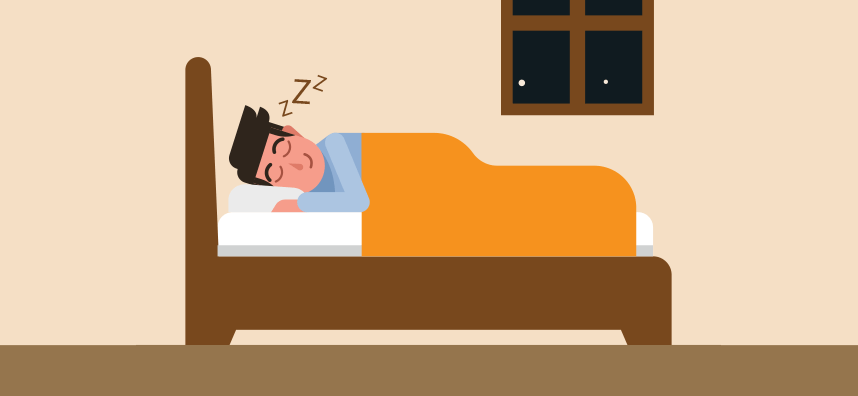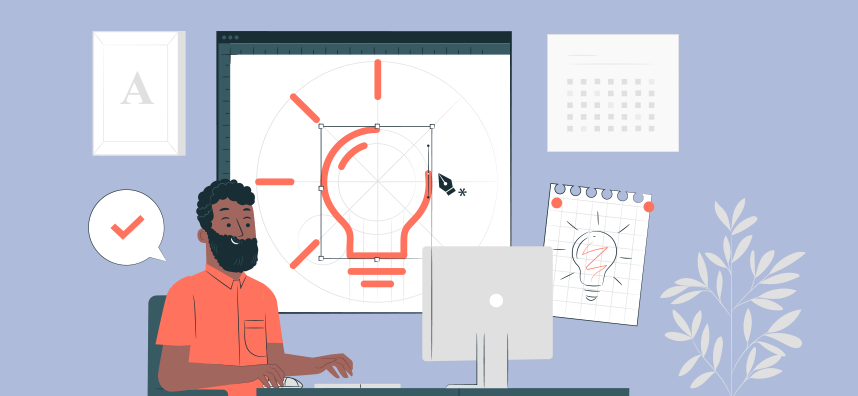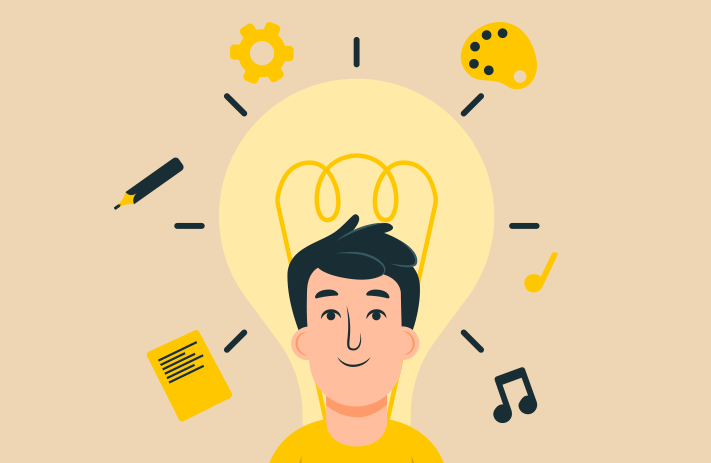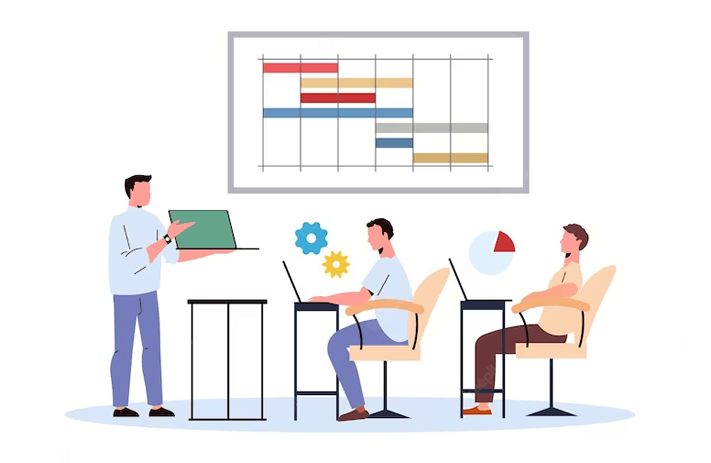
Click the button to start reading
How to Spark Creativity: A Guide to Unleashing Your Creativity at Work
Many of us have this notion that creativity is all about adopting a Zen state of mind. Oscillate your mind in synchronization with the universe and brilliant ideas will spontaneously appear in your brain. And sometimes that happens!
But usually, there are simpler and more effective ways to spark creativity.
Creativity is how our brain responds to problems. Whenever we have a need to “be creative”, it’s to overcome some kind of obstacle. When considered from this perspective, we realize that creativity doesn’t have to mean “inventing” things on the spot—it can simply means identifying the method that most effectively solves the problem.
In this article we’re going to look at 5 fundamental habits which can increase your base creativity level forever. We’ll follow that up with 10 instantly actionable tips for unleashing your creative inspiration right now.

Get more and better sleep
According to Matthew Walker, the world’s preeminent expert on the subject, sleep is fundamental to creative thinking on every level. On the one hand, his latest research found that our brains proactively solve problems on our behalf while we’re dreaming. The lesson here is that consistent REM sleep is important, on a biological level, for creativity.
But what about when we’re awake? More than a third of US workers are chronically sleep deprived—that is, they’re getting 6 or fewer hours’ sleep per night. Sleep deprivation means we generate solutions to problems more slowly, less accurately, and less often. We have significantly impaired decision making and our brain struggles to interpret data and make intuitive leaps—two crucial aspects of creative thinking.
In order for our brains to be consistently able to generate new ideas and analyze problems, we need to be well-rested. Horrendously simple as it sounds, having a consistent sleep schedule and bagging your 7-9 hours every night will transform your creativity.
Prioritize quantity of ideas over quality
If you’re facing a problem, it’s extremely rare that a powerful and innovative solution just pops into your head. The truth is that some of the most “creative” people are those who produce the biggest mass of ideas—and then filter them effectively.
Say you work in advertising and you just can’t figure out that killer headline. Your brain is best at producing new ideas when the old ones are stored away. So write down or record yourself saying any potential solution that comes into your head.
Seriously. “There are no bad ideas” and all that. Set a timer and keep going until you’ve got nothing left.
Then take time away from the project and distract yourself with something else. Come back to your brainstorm and start filtering out the ideas that have real potential. Discuss them with the team, start testing hypotheses—it’s almost certain that by generating 100 ideas, at least a handful will have serious basis for consideration. They’ll be original, innovative, left-field or unexpected enough to be perfect.
Even if you wouldn’t recognize this process as traditional creativity, the results speak for themselves.

Ask more questions—lots of them
Or in other words, get more data.
First thing’s first, when we use “data” in this context we aren’t talking about big data: ones and zeroes and cookies and phishing. We mean getting more information about the problem you’re facing.
You’re in advertising again. Now you’re trying to figure out which product benefits to include in your ads, to build the most effective message for selling. Rather than throwing spaghetti at wall, focus on clarifying the problem you’re trying to solve: getting more people to buy your product after seeing the ad.
Then seek out information related to the problem. Information like:
- Why would people not be convinced to buy?
- What assumptions have we made about our customers?
- What quality of leads are we getting?
- Are our page/product views by viable leads?
- How are we driving traffic there?
- Why did past customers decide to buy? Did they have any hesitations? What convinced them?
- What are we doing differently to competitors?
By questions like this, you can identify areas for improvement for any problem, not just adverts. By gathering more “data”, the problem and its potential solutions becomes much clearer. You enable “creativity” not by waiting on divine intervention, but by taking proactive action.
Make distracting yourself a habit
Creative ideas rarely come to us while we’re intensely focused on finding them. Instead, they pop up while we’re doing something totally unrelated. For example:
- Going for a run or walk
- Washing some dishes
- Playing with the office dog
- Take a shower
- Chatting with colleagues in person
- Cooking some food
- Meditating
- Running some errands…
And doing these unrelated activities stimulates creativity incredibly well. The idea is that your subconscious mind will keep working on a problem long after you’re consciously finished. When you do something like playing video games, your whole brain is consumed by this dopamine machine. When you go for a walk (without stimulus like music or podcasts) your brain works away at processing everything that’s happened to you that day.
It’s no coincidence that so many “eureka” moments occur when we’re entirely un-engaged with a problem. One of the most popular exercises for clearing the mind like this is the cold shower. The combination of shock, adrenaline, nervous system reaction and a totally blank mind are a creative recipe many swear by.
Make any of these activities a regular habit and you’ll find brilliant, creative ideas coming out your ears.

Spend more time doing absolutely nothing
The modern brain is a highway of whirring thoughts, stimulus and activity. And that’s fine. But a powerful method for sparking creativity is to simply allow everything in your brain to just…run its course. The goal here isn’t to control or manipulate or react to your thoughts; just observe them.
No need to stick at this for long, 5 or 10 minutes at a time is enough. It can very quickly give your brain the quiet space it needs to generate new ideas, recognize the bad ideas you’re already pursuing, and generally quiet down the noise.
If you end up daydreaming about random stuff that’s totally unrelated to your problem, don’t fight it. Let the mind do what it wants and set a timer if you’re worried about drifting off somewhere. If you’ve never tried this, you’ll be amazed at how quickly it can lead to ideas and perspectives you had never considered before.
If this doesn’t come easy to you, consider structured meditation. You will do essentially what we’ve outlined above, but with someone telling you exactly how to do it. Consider downloading an app like Headspace and follow a guided meditation for a few minutes.
Doing this regularly will free up your mind on a consistent basis, allowing you to unleash your inner creative beast at will.

Quick-fire tips for sparking creativity right now
#1 Declutter your physical space
Empirical data tells us that a messy desk makes for a messy brain. Wherever you work, make a conscious effort to declutter and put things away so they’re not in your field of view. This can dramatically improve our clarity of thought because we’re no longer stressed about the disaster that is our work environment.
(If possible, try to create a routine of cleaning up your workstation at the end of each working day; that way, when you return the next morning, you have one less hurdle to overcome on your road to creative thinking!)
#2 Declutter your mental space
When your mind is so clogged full of stimulus all the time, it’s impossible to foster any real creativity or clarity of thought. Managing apps, websites, phones, people and other stimuli will actively relax your brain—and then the good juices start flowing again. Try turning off all distractions for 30 minutes (without cheating!) and see if you can’t obliterate that creative blockade.
#3 Breathe
Twenty deep breaths, in through the nose and out through the mouth and pausing to hold the breath before releasing. Do this for the full twenty breaths and wonder at how much more clear and focused your brain is—the exact state you need for creative thought.
#4 Copy other people
There’s no such thing as a truly original idea. Instead of trying to reinvent the wheel, go and see what others have done to solve similar problems. This applies to any problem in any industry.
You can directly rip off competitors or random companies or strangers on the internet; ask colleagues or friends what they would do (or have done in similar situations) or, if it’s a larger-scale problem, look for case studies or interviews online where other solutions or processes are presented.
This won’t always provide a gift-wrapped solution to your problem, but it allows your brain to process a ton of different ideas and get its creative juices flowing. You’ll start to connect dots you hadn’t considered before.
(Being creative doesn’t have to mean being original. Being original is very overrated. Being effective is where it’s at.)
#5 Turn off the internet
Most of our minds are constantly overloaded with stimuli, especially online. Social media, messaging apps, smartphones, every website imaginable… There’s a lot of distractions out there.
But we can choose to eliminate all of these distractions by simply turning off the internet or enabling airplane mode. Your mind is going to rebel and feel anxious for a few minutes…and then it’s going to go quiet.
Having eliminated other distractions, your brain will actually want to examine your problem and come up with ideas. Why? Because successfully doing so will give it a little hit of dopamine—the same chemical it usually gets from Facebook, chatting to colleagues, reading the news and compulsively picking up your phone.

#6 Exercise.
Getting away from the problem and working up your heart rate is a masterful way of stimulating creativity. A misconception is that we need to be doing intense 60-minute workouts and really punish the body, but this isn’t true. Anything from a brisk walk to a long run is absolutely effective.
Sometimes the brilliant idea comes while we’re exercising, but more likely you’ll return to work feeling positive, invigorated and optimistic, and creative solutions will come to you with far greater ease.
#7 “Do Something”
This is one for those moments where you’re staring at the (metaphorical or physical) wall and have no idea how to move forward. Just do something. Anything. Force your brain into gear and attempt to apply a solution for even a few minutes.
This idea was popularized by blogger Mark Manson as a way of getting out of a creative rut. More often than not, this seemingly pointless action will lead you down a path towards better ideas and solutions.
#8 Do creative work early
Waiting until late in the day to tackle your creative work is a recipe for frustration and failure. It is a simple truth that we’re far more creative and capable of solving problems when we’re refreshed and energized—once you’ve already been working for 5, 6, or 7 hours, your creative reserves are probably exhausted.
By planning your creative work early in the day, where possible, you’ll find those game-changing ideas far easier to access.
Conclusion
Creativity is an infinite resource. Our biggest problem with sparking creativity is our own perception of how it works. Most of us expect creative lightning bolts to strike us while we’re staring at the computer screen. But as you now know, all it really takes is a little stimulation from our side.
More importantly, we can all take steps to improve our capacity for creative thinking on a daily basis. We are all capable of becoming amazingly innovative thinkers that consistently find solutions to our problems—hopefully this article helps you unlock that creativity when you need it most.
















